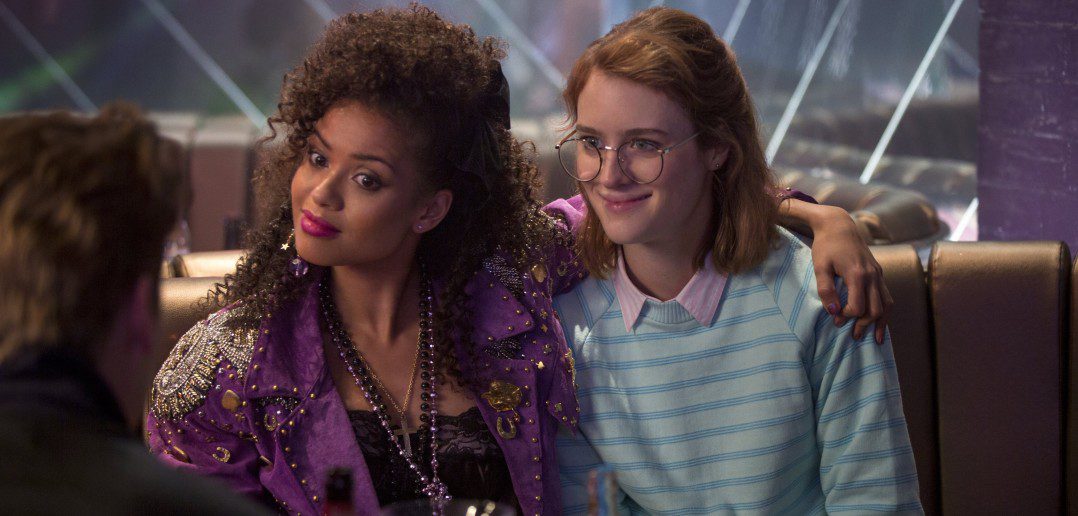Be it the Gilmore Girls’ Netflix revival, Black Mirror’s San Junipero (top photo), Harry Potter spin-off Fantastic Beasts and Where To Find Them, or augmented reality game Pokémon Go, 2016 has felt like a serious blast from the past. Research shows that remembering positive things from the past can help us feel better in the present, so nostalgia can actually serve a defence mechanism, protecting us from bad memories by flooding us with good ones. And 2016 was certainly a year where positive memories were needed.
In San Junipero, the stand-out episode of Black Mirror’s third season, nostalgia is better than death. In fact, nostalgia even makes people no longer fear the end of their lives. San Junipero is an “immersive nostalgia therapy”, an evergreen simulation where the near-dead can spend time and decide whether or not to have their consciousness and ideal image uploaded to the cloud there forever once they have passed on. At the end of the episode (spoiler alert!), the main characters decide in favour of San Junipero in the 1980s construct. This exaggerated, heavenly view of the 1980s, filled with the era’s best music, fashion, movies and video games, available forever, is the epitome of therapeutic nostalgia.
As a culture, we’re prone to idealising — and in some areas such as fashion and music, recreating — past decades. This used to happen in waves, but in the new millennium and with the unlimited supply of inspiration the internet provides, nostalgia has become much less linear. Multiple decades are now being simultaneously looked back upon. Downton Abbey sparked interest in the 1910s and 1920s. Mad Men inspired 1960s nostalgia. Netflix series The Get Down is a modern throwback to New York’s late-’70s burgeoning hip-hop scene, and Stranger Things is an ode to 1980s film classics such as E.T. and The Goonies, but with fresh storytelling that instantly captivated millions of viewers and turned the series into an overnight cult classic.
The key ingredient of nostalgic TV shows is authenticity. For example, the title sequence of Stranger Things was widely discussed because it was captured in a truly 80s fashion. The font choice is also distinctly 80s, and shows how much attention was paid to making the show feel authentic, to a level rarely offered bymainstream TV.
Stranger Things also captivated us by embracing modern technology. Netflix released a YouTube video that let viewers experience the show in virtual reality / 360 degrees. There’s also a Stranger Things Lightbulb Message Maker that enables fans to customise their own lightbulb messages, and there’s a text creator that enables you to put text in a Stranger Things font.
This creative blend of old and new can be found just about everywhere in today’s digital world – for example, apps like Instagram enable us to express our creativity in a nostalgic way and new controllers plugged into our smartphones allow us to play retro video games.
The biggest phenomenon in the gaming, maybe even entertainment, world this year, was without any doubt Pokémon Go. Based on the video games, trading cards, and TV shows/movies of the same name that were ubiquitous in the ’90s, the more recent augmented-reality mobile game drew 25 million users at the height of its popularity in July. The New York Times called it millennials’ “first mass-consumption nostalgia product.” Not only did the game attract old fans, but it also resonated with people who were indirectly familiar with the characters. “Pokémon is a cultural touchstone of my youth, something that stoked a sense of nostalgia,” one Times reporter wrote, “and something I suddenly became invested in.”
Another key point is that nostalgia is at its best when it’s contagious. Of course, not everyone who jumped in on the Pokémon Go craze had nostalgic memories associated with the franchise. But when people see others so excited about something from their past the excitement often spreads.
One entertainer who frequently uses nostalgia and whose videos spread widely is Jimmy Fallon. When he took over The Tonight Show from Jay Leno, the show sorely needed to enter the 21st century. Realising the power of viral videos, Fallon began creating segments that would do well online and build the show’s brand. His YouTube channel has now 12,6 million subscribers, and that’s in good part because of his willingness to tap into nostalgia. He recreated The Fresh Prince of Bel-Air opening (10.8 million views), brought us back to Saved By the Bell (35 million views), and reunited the Good Burger crew (12.6 million views).
And the eagerness to revisit older cultural sensations is probably not dying down anytime soon. Netflix is currently producing Season 2 of Stranger Things and Full House while Showtime prepares for one of the biggest TV show revivals of 2017: The return of Twin Peaks.
Let’s just hope that by then, we’ll be able to face the present with as warm and fuzzy feelings as we do the past…
Top photo © Netflix




